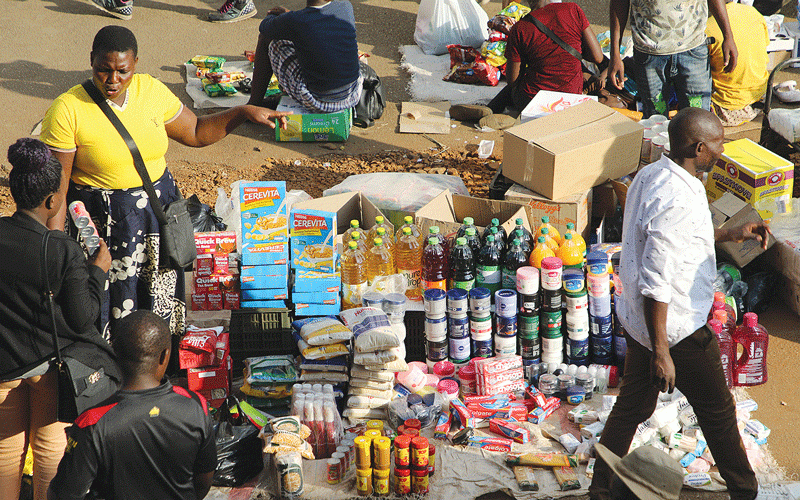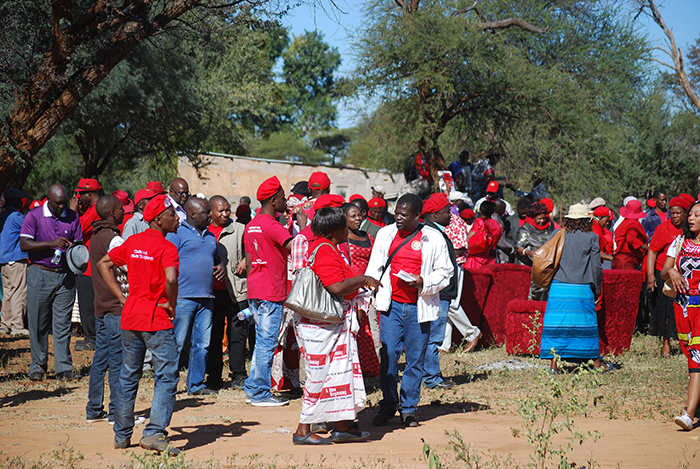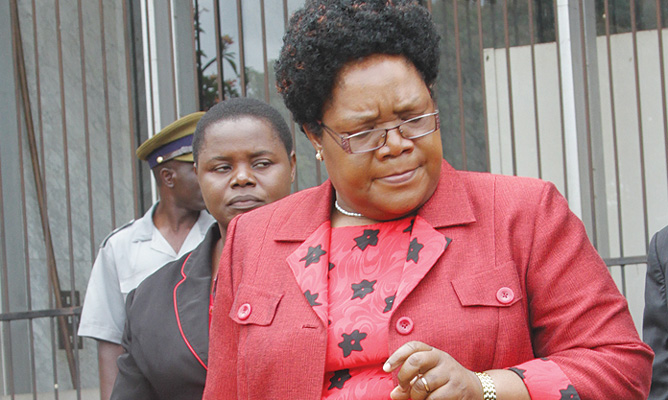
Chapter 3 continued October 2013 — December 2018
3,9 Being cognisant of the fact that the government will continue to experience fiscal space challenges going into the near future, there is great need to optimise utilisation of the scarce revenue streams that flow into the fiscus.
This plan, as reiterated, will be greatly guided by the results-based management system and results-based budgeting (RBB) which emphasises achievement of tangible and high quality results from limited resources.
3,10 Additionally, the plan seeks to address systemic institutional weaknesses by allowing the full exploitation of benefits arising from horizontal and vertical linkages, hence fostering the spirit of collaboration and partnerships among government agencies.
3,11 To ensure food and nutrition security, government will continue to defend the gains of the country’s hard-won Independence by making sure that the agricultural sector remains the beacon of the economy. The government will reestablish financial support for agriculture so that farmers will increase production, productivity and product quality.
3,12 In order to stimulate agricultural productivity and safeguard food security, the government will recapitalise and capacitate AgriBank and the grain marketing board (GMB), the agricultural marketing authority (AMA) and the agricultural rural development authority (Arda). While the plan will ensure that the presidential input support scheme focuses on supporting the vulnerable groups at household and community level, it will also ensure that other farmers timeously access affordable inputs. Policies will also be put in place to promote contract farming initiatives. The anticipated growth within the agricultural sector will be underpinned by the following
Sectoral assumptions: i Improved agricultural infrastructure to mitigate against drought through rehabilitation and expansion of irrigation projects and increased construction of dams; ii Timeous availability of inputs on the market at affordable prices; iii Continued use of the multiple currency system; iv Agriculture being taken as a priority sector by the government including addressing funding issues; v Increased own farmer financing; vi Strengthened and capacitated key institutions such as Agribank, Agricultural Marketing Authority, Agricultural Rural development authority and Grain marketing board. vii Increased contract farming arrangements (tobacco and cotton); viii Cancellation of the US$80 million electricity owed to Zesa by farmers; and Full operationalization of the Chisumbanje – Middle Sabi sugarcane project to boost sugar cane production.
3,13 In the social services and poverty eradication sphere, Zim Asset will ride on the opportunities of the Indigenisation and economic empowerment programme for the funding of public utilities in the communities such as schools, hospitals, housing and other social amenities with the intention of creating employment for the youth and women thereby improving the standards of living of the populace. The government will continue to improve the quality of education from early childhood development (ECD) to vocational and tertiary levels to enhance literacy levels and skills development.
- Chamisa under fire over US$120K donation
- Mavhunga puts DeMbare into Chibuku quarterfinals
- Pension funds bet on Cabora Bassa oilfields
- Councils defy govt fire tender directive
Keep Reading
3,14 A robust infrastructure network and system plays a fundamental role in the socio-economic development of Zimbabwe. To this end, the government will rehabilitate, upgrade and develop the national power grid, road and railway network, water storage, supply and sanitation, buildings as well as ICT related infrastructure. Accordingly, the Infrastructural Development Bank of Zimbabwe (Idbz) will need to be recapacitated to enable it to strategically fulfill its mandate in infrastructural development.
3,15 In the Energy Sector the plan will in addition prioritise attainment of optimal generation of power, the production and use of bio-fuels as enablers for economic productivity and growth. The following assumptions will underpin the optimal generation and use of energy in the economy: i Raising the installed generation capacity of existing power stations to their optimum; ii Expansion of existing power stations such as Hwange and Kariba; iii Completion of new big and mini-hydro-power projects such as Batoka and Gairezi respectively; iv Resuscitating small thermal power stations of Harare, Bulawayo and Munyati to full power generation capacity; v Full utilisation of alternative forms of energy such as coal bed methane gas; and deliberate development of solar and wind energy initiatives.
3,16 One of the focus areas of the plan is to ensure that all primary commodities across sectors create more value through processing and beneficiation. Given the country’s abundant mineral resource base, the government foresees this sector contributing immensely towards GDP growth. This will be achieved by establishing indigenous mining syndicates, consortia, SMEs and co-operatives, hence resonating well with the government’s thrust of indigenisation, empowerment and employment creation.
3,17 In view of the foregoing, national institutions such as the Mineral exploration company, Zimbabwe Mining Development Corporation (ZMDC) and the Minerals Marketing Corporation of Zimbabwe (MMCZ), will play a pivotal role in management of the minerals value chain system in terms of creating a conducive environment for minerals exploitation, value addition and marketing. The continued growth of the mining sector will be underpinned by the following assumptions: i Recovery in international commodity prices; ii Improved electricity and water supply; iii Strengthening and capacitating the key mining institutions of Minerals exploration company, ZMDC and MMCZ; iv Improved liquidity conditions resulting in availability of finance for the sector; and v Increased support to the SMEs and Co-operatives in the mining sector.
3,18 In the manufacturing sector, the government is totally committed to resuscitating distressed and closed companies with a view to increasing capacity utilisation to optimum levels, generating employment and substituting imports as well as building a sustainable basis for export led growth. In this regard, the industrial development corporation (IDC) will be recapitalised and its operations refocused as one of the key investment vehicles to assist ailing industries. The resuscitation and growth of the manufacturing sector will be premised on the following conditions: i Resumption of operations at New ZimSteel (formerly ZIsco-Steel); ii Establishment of new iron and steel companies; iii Improved electricity and water supply; iv Strengthening and capacitating key institutions such as IDC, IDBZ and other financial institutions, and v Resuscitation and recapitalisation of the local industry.
3,19 In the wake of the successful co-hosting of the 20th session of the UNWTO General Assembly by Zimbabwe and Zambia, the tourism sector has proven to be a major economic pillar currently contributing 10% of the gross domestic product. The contribution is expected to increase to 15% by 2015. Furthermore, this key economic driver will be supported by implementing a national tourism policy, continued improvement of the country’s image and aggressive marketing efforts. Key institutions in this sector such as the Zimbabwe Tourism Authority (ZTA) and the national conventions bureau (NCB) will play a paramount role in ensuring the sustainable contribution of the tourism sector to the GDP of the country.
3,20 The successful implementation of the Zim Asset plan will be anchored on sustainable economic empowerment and employment creation programmes for the citizenry. The main thrust of the SMEs and co-operatives policy will be on creating and growing opportunities for business, skills development and provision of funding for indigenous business ventures especially start-ups and those run by previously disadvantaged individuals. In order to achieve financial inclusion of innovative youth and women in the formal sector, Sedco will be recapitalised to finance the development of these projects.
In pursuance of the aforementioned sustainable developmental thrust, government will continue with the “Look East” policy to unlock the inflow of potential investment into the country.
Zim Asset to continue tomorrow










